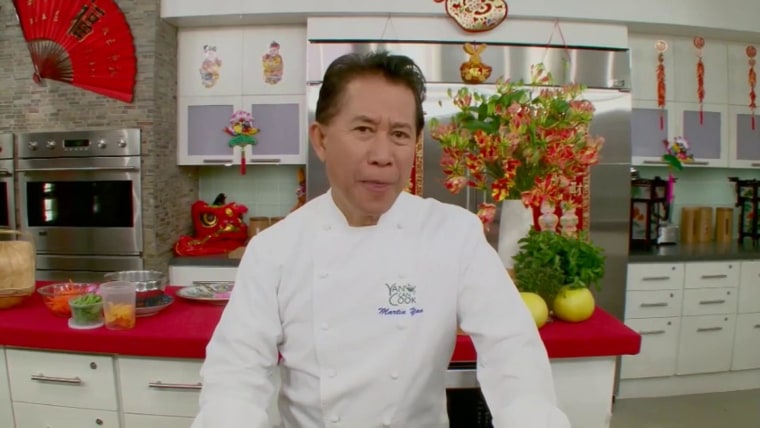14 most commonly confused cooking terms, defined - TODAY - TODAY |
- 14 most commonly confused cooking terms, defined - TODAY - TODAY
- How 2020 changed cooking for the better - Los Angeles Times
- What to Cook This Weekend - The New York Times
- 5 tips for teaching children confidence-building cooking and kitchen skills - San Bernardino County Sun
- From comfort to connections, virtual cooking classes offer benefits far beyond good food - KCBY.com 11
|
14 most commonly confused cooking terms, defined - TODAY - TODAY Posted: 19 Mar 2021 10:43 AM PDT Has a term you didn't know ever stopped you from trying out a new recipe? When it comes to cooking, there are plenty of methods the average home chef may be unfamiliar with, but that doesn't mean you should shy away from more complicated dishes and desserts. We consulted some of the top experts at cooking schools across the country to help define some of the more elusive culinary terms so you can mince, dice and fold it in like a pro. Chef Lance Nitahara, assistant professor of Culinary Arts at The Culinary Institute of America in Hyde Park, New York told TODAY Food that since many people now get their cooking instruction from outside sources such as YouTube videos, it can be really helpful to have a basic knowledge of some culinary terms. "Understanding the terminology for techniques used can lead to a better understanding of the technical aspect of cooking through communication," he said. Here are some of the cooking terms that may trip you up when you see them in a recipe: Scant"This one is rarely used in the industry," said Nitahara. "It describes a measurement that just barely fills the volume measure that it describes. For instance, a 'scant cup' would be just under the top of the cup measure, rather than level or heaping over." Scant can also sometimes be used to describe a measurement of dry items that could be packed down, but are not, for example, a cup of unpacked brown sugar. Sweat"Sweating means to cook something without giving it any color," Frank Proto, director of culinary operations at the Institute of Culinary Education told TODAY. "This is mostly done with vegetables and aromatics, when you want to bring out some of the moisture by cooking it over low to medium heat with a little fat." For example, when making risotto, you sweat out the onions to cook them but you don't want them to get any color. Try it in: 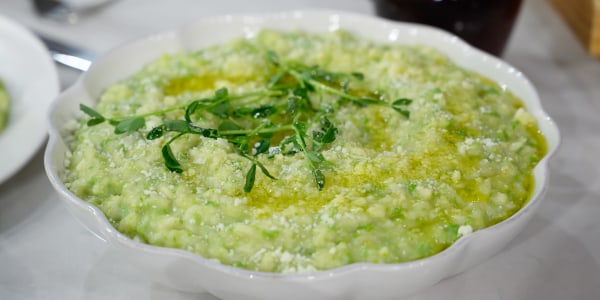 Nathan Congleton / TODAY Zest"Zest of a citrus fruit is the brightly colored outer covering of the fruit's peel, also known as the flavedo of the fruit," said Nitahara. "The zest of the fruit does not include the white pith that lies just beneath it, and recipes calling for zest generally do not include the pith as it is bitter and astringent." Citrus zest is intensely aromatic, but has very little flavor, and this is due to the essential oils that are encased in the cells of the zest. Zest can be used to add flavor and aroma to desserts, sauces or meats. "I often use them to boost the flavor and aroma of orange juice-glazed beets," said Nitahara. Try it in: 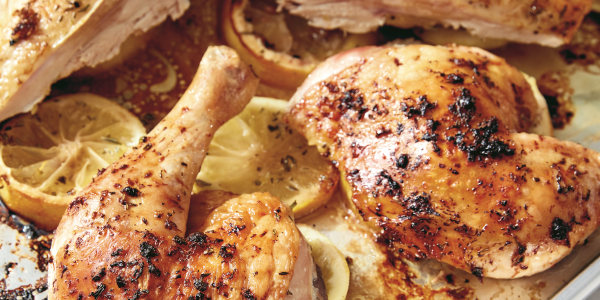 Kristin Teig Julienne"A classic julienne is a vegetable cut that measures 1/8" x 1/8" x 1" to 2"," said Nitahara. "This is roughly about the same size as a matchstick." A julienne cut can also be described as a non-precision thin, longer cut of an item, such as thinly cut carrot sticks for a salad. April 11, 201403:34
Bouquet garni"This is a bundle of herbs tied with twine used to flavor soups, stocks and stews," said Proto. "Tying the herbs together before adding them makes it easier to fish them out when you're done cooking." You can use any herbs in a bouquet garni, but a basic one might include a bay leaf, parsley stems and thyme. Try it in:  Jamie Geller Deglaze"Deglazing is when you add liquid to a pot or pan that was used to brown meat or vegetables, in order to lift the fond — little caramelized bits and juices — from the bottom of the pan," said Proto. "I always tell my students that the fond contains a lot of flavor, so we use deglazing to loosen the fond from the pan and stir it into the liquid — often making a sauce for the dish." Make sure not to let the fond burn or it will develop a bitter taste. Try it in:  Nathan Congleton / TODAY Fold"Folding is more commonly used in pastry applications, when you're combining two items of different weight together without beating the air out," said Proto. "For example, when you make soufflé you need to mix the egg whites into the heavy base while keeping them aerated. Take the spatula and scrape it along the side of the bowl closest to your body, then as it reaches the curve, flip it over and gently glide the spatula back over the mixture in the opposite direction. Continue folding until the items are mixed." Proto said that you want to avoid vigorously stirring in erratic directions which will beat the air out. Try it in: 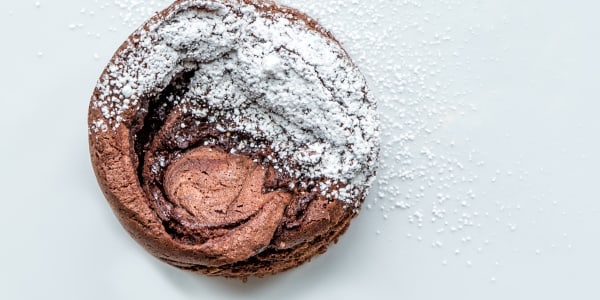 JoAnn Swenson / Floriole Bakery, Chicago Reduce"Reduction is the application of heat to a liquid to cause it to simmer or boil until some, or all, of the water in the liquid has evaporated," said Nitahara. "This will cause the liquid to become more intense in flavor, color and aroma, and it may also thicken the liquid if the liquid contains starch, gelatin, fiber or other thickening agents." Truss"Trussing is the tying of an item with butcher's twine to prepare it for cooking," said Nitahara. "This is most often used on meat roasts or whole poultry. Trussing achieves two things: first, it shapes the item for presentation after cooking. It also allows the item to cook more evenly." If an item is untrussed, the thinner parts of it will overcook by the time the thicker parts are cooked to doneness, so trussing can create an even, more uniform shape to prevent that from happening. Try it in: 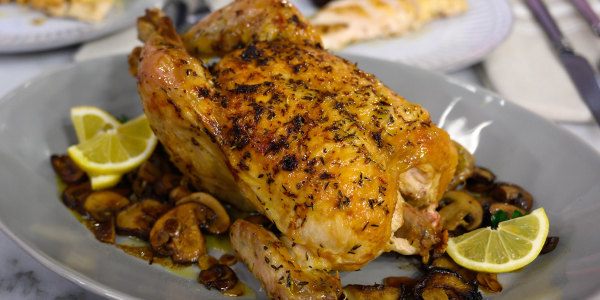 Nathan Congleton/TODAY Blanch"Blanching is when you place food into boiling water for a short period of time and then plunge it into an ice water bath to stop the cooking process,' said Proto. "This is typically done with fruits and vegetables." Blanching reduces the final cooking time so it's usually not the final step of the cooking process. This cooking technique preserves a food's color, kills enzymes in food and makes it easier to remove the skin of some foods like tomatoes and peaches. Mince"Mincing is the rapid chopping of a food item by rocking the curved part of the knife back and forth over the item being minced," said Nitahara. "This results in a finely cut item to use for fillings or garnishes." Items you typically mince include onions, garlic, shallots or other aromatics. Dec. 12, 202003:21
Rough chop"Rough chopping an item is briefly cutting an item into relatively even sized pieces with little regard to uniformity of shape," said Nitahara. "This is often done with foods that are not going to be highlighted as a visual garnish, rather cooked down into a sauce or a flavor enhancement." Dice"A classic small dice is an item cut to the dimensions of 1/4" x 1/4" x 1/4"," said Nitahara. "A classic medium dice is cut into the dimensions of 1/2" x 1/2" x 1/2"." Water bath"If you're doing any large-scale cooking, water baths can be used to keep food warm," said Proto. "To do this, fill an oven tray with water and place it at the back of the stove, then place food into smaller trays and rest them side by side over the water bath to keep them warm." Another application for water baths is when you're making custards, soufflés and crème brulees. "When baking, a water bath will provide insulation so they cook slower and more evenly," said Proto. "The steam from a water bath or double boiler can also be used to gently cook egg yolks without scrambling them to make the classic Hollandaise sauce," said Nitahara. Try it in: 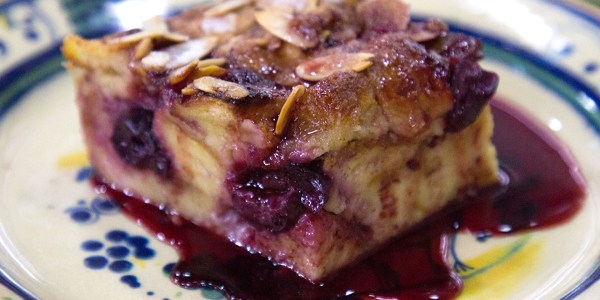 Nathan Congleton / TODAY Knowing these culinary terms can making executing the next recipe that catches your eye a whole lot easier, but if you forget any of them or come across another word that's unfamiliar, don't sweat it. "When I am at home cooking for loved ones, no one is going to notice whether or not I've cut my juliennes a quarter inch longer than the classic technique demands," said Chef Nitahara. "A thin, long slice of carrot will definitely suffice." Nitahara said that it's important to remember that the ability to cook doesn't just come from the brain, it comes from the heart. "Precision measurements may be crucial in a restaurant, but at home, it's more important to make sure the food tastes good, and we can only do that if we are truly enjoying the process," he said. "The sages of past generations have been cooking that way for their families for years. I don't think my grandma even owned measuring spoons, much less a ruler to measure her vegetable cuts." Related: April 12, 201805:28
|
|
How 2020 changed cooking for the better - Los Angeles Times Posted: 19 Mar 2021 10:00 AM PDT I remember the last thing I cooked before the shutdown last year. I had made my baking friend Edd Kimber's Salted Black Cocoa Sablés, and as I served the cookies to a couple of friends I'd invited for dinner, one of my guests, commenting on the developing news, remarked, "I mean, I'm not even sure if we should be here right now, doing this." We all murmured quietly in agreement and then anxiously grabbed a cookie. The next day, the shutdown was announced. Prior to this day, by and large, cooking enthusiasts cooked more for pleasure than out of sheer obligation, while many others had to cook out of necessity, like parents, caregivers and those in multigenerational households where not cooking is not an option. But after that day, those of us who were able to enjoy leisurely cooking had to switch to cooking for survival. The new mission? Keep the pleasure going in something that now existed in a world temporarily devoid of it. Suddenly, the audience for cooking magazines and newspaper sections like our own — primarily adventurous and experienced home cooks who enjoy perusing the gourmet aisle of grocery stores or leisurely strolling the paths of farmers markets — swelled with novice cooks who, because of the pandemic-induced shortages and fears of grocery shopping, were more heavily reliant on shelf- and freezer-stable ingredients. This new audience needed simply to feed themselves, period. Across food media, brands had to recalibrate their focus and lean into recipes that required the minimum of skill. We were all in the same boat now. People who hated cooking or never cared much for it had to learn. After years of conversations with friends and associates in the food world about how we wished more people cared about cooking, our dream had come true, although not in the environment we'd hoped. As a reaction to the pandemic and the new restrictions it placed on our routine lives, a can-do attitude flourished. Can't go out for a latte? Make a simulation at home that also gives your arm exercise from lots of whisking. Can't get a loaf of bread from the bakery? Take up sourdough bread and learn how to keep a starter alive. The patience for making complicated project-style recipes started to grow thanks to endless hours, days and weeks at home with nothing to do. Now that dinner party fare was a thing of the past, my colleague Genevieve Ko and I at The Times focused on delivering short, simple, teaching-based recipes in our How to Boil Water series. We took turns developing a new recipe each weekday and hosting Instagram Live videos to show how to make the dishes in a sort of live-react cooking show format. Searing chicken breasts, roasting vegetables, making a pot of rice — these skills were now paramount to a whole new generation of formerly reluctant cooks. But once summer hit, the killing of George Floyd and the racial fallout that followed changed the world. In food media, that cultural awakening spurred conversations about recipe appropriation and the need to showcase creators. We asked ourselves, "Who gets to tell certain food stories? Who gets to develop certain recipes?" The focus of recipe development shifted from ingredients and techniques to the makers — the rightful ones. Black authors who had been overlooked or pigeonholed into developing only African or American Southern dishes were pushed into the spotlight, their recipes promoted with a fervor to right the wrongs of the previous century of food media treatment. Anyone who had been paying attention rightfully no longer accepted traditional Black, Asian or Latin recipes from a white developer. This sort of "recipe colonialism," which had been de facto for decades among many media outlets — paying lip service to diverse content without actually employing diverse employees or crediting correct sources — now looked cringingly dated at best and outright racist at worst. The new breadth of voices and dishes appearing in magazines, newspapers and online led to a more engaged audience that no longer simply wanted "basics" as presented through a white "American" lens but was eager for fundamental techniques and dishes from around the world that could teach them about different cultures too. The world of recipes and what audiences have the attention span and knowledge to absorb had been inextricably altered. Readers were more educated and wanted recipes from real authorities, the cooks and chefs with real experience and cultural ties to their food. Readers now saw a curry masquerading as a "stew" and were finally ready to engage in the long-needed conversation about no longer accepting those appropriations. Once the holidays hit, the cooking conversation shifted once more, if only for the season. Nostalgia and the awareness of lost or separated loved ones made the outlook of holiday meals a bleak one. Some opted to cook smaller meals while others couldn't handle the thought of a smaller meal and stuck doggedly to tradition, no matter the waste or leftovers it created. But I understood that predilection. When all you have is the ritual of cooking a holiday meal — arguably the seasonal task we look forward to the most — to get you through a looming stretch of bleak winter isolation, shouldn't you be able to have your whole turkey and tray of stuffing if it helps you stay sane? Now, a year after the pandemic started, many people are getting vaccinated — or will be by the end of May — and so the kind of convivial cooking we enjoyed before the pandemic is once again possible. I'm sure many people might rejoice at the thought of being able to go back to restaurants and will forgo cooking for months in celebratory protest. But I know many more who will relish getting to put their past year's worth of new skills and cultural knowledge on display for small gatherings of friends and family. I anticipate this swing back to entertaining — at least on a small scale — with people excited to finally eat a meal they didn't make for themselves. The joy of cooking for others will return. But it will carry with it an awareness about sourcing and credit — where did those techniques really come from, who really created those dishes — allowing us, I hope, to appreciate their contributions with respect, reverence and learning. Just as important, cooking will once again provide the backdrop to what really matters in life: seeing our family, catching up with friends and making memories that will sustain us through hard times of all kinds in the future. |
|
What to Cook This Weekend - The New York Times Posted: 19 Mar 2021 07:30 AM PDT  Good morning. Nowruz, the Persian New Year, is tomorrow, and, if the feasting and exchanging of presents will be muted this year because of the pandemic, we've still got loads of recipes appropriate to the holiday. Take a look at Samin Nosrat's khoresh-e fesenjoon, for instance, a Persian chicken stew with pomegranate molasses and walnuts (above). You could serve that with sabzi polo, herbed rice with tahdig, and salad-e shirazi, a salad of cucumber, tomatoes and onion. That would be a very nice meal. (And it would yield tremendous leftovers, too.) Passover, meanwhile, doesn't start until the 27th, but my inbox is already filling with requests for recipes to use for the smaller gatherings required by this pandemic year. Susan Spungen to the rescue! She's got an ace lineup prepared, recipes you could bookmark for later or make right away, in a kind of practice round. (I find that making a dish for the first time for a holiday is a recipe for … stress.) Take a look at her chicken with apricots, green olives and shallots. She has a marvelous whole roasted cauliflower with pistachio-cilantro pesto. Here's a lovely matzo brei frittata. And some sweet potatoes with tsimmes glaze. Coconut macaroons with chocolate for dessert? Yes, please. Not that Joan Nathan has been slacking. For the holiday this year, she checked in on a particular Passover dish and spoke to its preparation across different branches of one family: saffron fish with red peppers. You could make that on Saturday night! All of our Passover recipes are here. If they're of limited interest, that's cool: We've got a big tent. You could make Yotam Ottolenghi's new recipe for cheesy baked polenta in tomato sauce instead. Or my old no-recipe recipe for New Mexican Hot Dish. Hey, this could be your weekend for shrimp burgers. There are thousands and thousands more recipes like that waiting for you on NYT Cooking. Go take a look and see what you find. Save the recipes you like and rate the ones you've made. You can leave notes on them, too, if you've come up with a hack or substitution you'd like to remember or share. You have to be a subscriber to do that, it's true. Subscriptions are what allow us to keep doing this work that we love. If you haven't done so already, I hope you will consider subscribing today. And we will remain alert to your messages, should anything go wrong while you're cooking or using our site and apps. Just write cookingcare@nytimes.com and someone will get back to you. (If you want to send a dart or offer a flower, I'm at: foodeditor@nytimes.com. I read every letter sent.) Now, it's a long walk from stand mixers and sheet pans, but I've been spending a lot of virtual time in Limburg, a Belgian province that borders the Netherlands, watching "Undercover," a Dutch-language crime series on Netflix. It's not great, but the scenery's pretty and I like hearing Dutch. Late to it, but Carl Hiaasen's farewell column in the Miami Herald is, like all his work, worth savoring. You should spend some time with Julia Moskin's amazing Times article about a year in the life of the restaurants and food businesses along a stretch of Cortelyou Road in the Ditmas Park neighborhood of Brooklyn, where the pandemic brought hardship and opportunity in different measures. Finally, do read Christopher Ketcham's stinging indictment of the National Park Service, "The Business of Scenery," in Harper's. "If you love a place," a retired ranger tells him, "don't make it a national park." I'll see you on Sunday. |
|
Posted: 19 Mar 2021 08:01 AM PDT  We know cooking at home helps promote better eating habits. With health in mind, what are we doing to pass cooking skills on to the next generation? Busy schedules can often lead to the consumption of more carry-out food and reheatable convenience meals, which can be a lifesaver for those with hectic, on-the-go lifestyles. However, these practices don't help children learn basic culinary skills at home. Here are some ways to help children build confidence in the kitchen with these important life skills: 1. Get Started Young The best way to involve little ones or those new to cooking is to let them observe you cooking. While toddlers are not yet able to be of much help in the kitchen, they can watch safely from a highchair or step stool with a safety rail. Preschool and school-age children can be given age-appropriate tasks for a hands-on experience. While a three-year-old might be able to mix batter with a wooden spoon and tear lettuce leaves, a five-year-old can squeeze lemon juice into a bowl or peel a hard-boiled egg. 2. Teach Names of Culinary Tools We all have the potential to be intimidated by things that are unfamiliar. Culinary tools like graters, peelers, spatulas, whisks and measuring cups among other small tools serve important roles in cooking and baking. Young children can become familiarized with these tools by learning their names and uses. When cooking with children or grandchildren, be sure to identify kitchen tools by name. 3. Grocery Shop and Meal Plan Together There's no better way to learn about healthy foods than at the grocery store. By coming along to the supermarket or farmer's market, children can learn to identify endless fruit and vegetables and understand more about the food that ends up on the dinner table. Kids can be taught that cooking involves multiple steps from meal planning and making a grocery list to cooking and cleaning up. This is an opportunity to teach about reducing food waste. 4. Reinforce Time Management Skills Cooking involves other additional skills including time management. Preparing a recipe means following multiple steps that take varying amounts of time. Plus, cooking requires the commitment of seeing all these steps through from start to finish. We can't just put something in the hot oven and walk away. While children at certain developmental stages should not be expected to manage time wisely, they can be taught to respect the process and use a timer to stay on task. 5. Practice Simple and Timeless Recipes Children who are taught culinary basics will be able to progress on to working more independently in the kitchen, preparing simple meals on their own. By about eight to 11 years old, kids can learn to plan a family meal and play a major role in executing it. Kids can learn safe and simple recipes based on their skill and maturity level such as popping popcorn, heating up soup, scrambling eggs, making a salad with homemade salad dressing. With exposure and familiarization early on, kids will grow up to be competent in the kitchen with a better understanding of food for a healthy lifestyle. LeeAnn Weintraub, MPH, RD is a registered dietitian, providing nutrition counseling and consulting to individuals, families and organizations. She can be reached by email at RD@halfacup.com. |
|
Posted: 19 Mar 2021 07:17 AM PDT [unable to retrieve full-text content]From comfort to connections, virtual cooking classes offer benefits far beyond good food KCBY.com 11
|
| You are subscribed to email updates from "cooking" - Google News. To stop receiving these emails, you may unsubscribe now. |
Email delivery powered by Google |
| Google, 1600 Amphitheatre Parkway, Mountain View, CA 94043, United States | |
from What to Cook https://ift.tt/3cPgpD0


